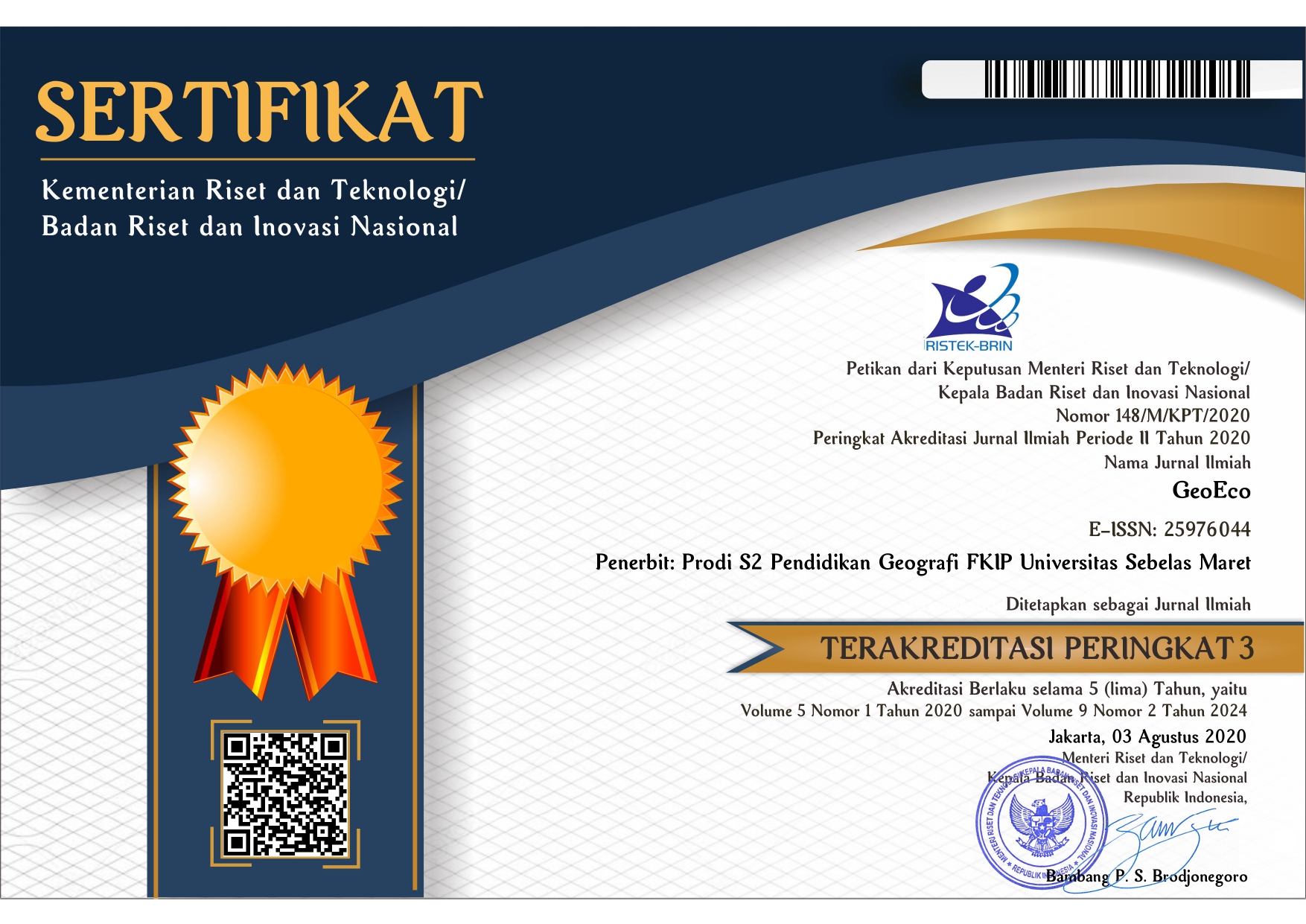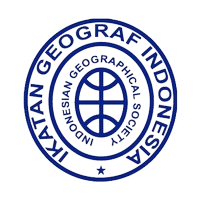POLA KERUANGAN BUDAYA MERARIQ MASYARAKAT LOMBOK TIMUR (Implementasinya Sebagai Pengayaan Pembelajaran Geografi Kelas XI Pada Pokok Bahasan Budaya Nasional dan Interaksi Global)
Abstract
This study aims to determine the spatial pattern merariq culture, public perception of merariq culture, trends merariq cultural change, and the implementation of research results as enrichment materials on the
subject of national culture and global interaction. Field work in the district are still often do merariq which is in District Sakra and rarely do merariq in District Aikmel, using descriptive qualitative method. The sampling technique using snowball sampling and random sampling. Data were collected through documentation, in-depth interviews (depth interview) in order to obtain information about the distribution
and trends of cultural change merariq and questionnaires are used to obtain information about the public perception of culture merariq and to obtain student feedback on the implementation of the research results
as a material for enrichment. The data has been analyzed using interactive techniques, conducted since the beginning of the study and during the study process is implemented. The results showed that people's
perceptions of the fundamental principles of doing merariq (elope), the public perception of the implementation merariq, and the public perception of the procession merariq most communities in the District Aikmel perception cons so that the downward trend in culture merariq higher, while in District Sakra have the perception that pro so that the tendency of decrease in the low merariq culture. Subdistrict Community Sakra most have royalty notch group so that they often do merariq, spread in the village Sakra, Suangi village, village news, Sakra village south, Rumbuk Village East Village East Village Suangi Moyot. people who rarely do merariq is Keselet Village and Village Rumbuk. While in the District Aikmel majority of communities have rarely do merariq because most of the people included in the group of students that emphasizes the line of Islam, spread in the village Aikmel, Village Aikmel East Village Aikmel West Village Aikmel North, Village Toya, Village Bagiq Nyaka Pupils, Village Kalijaga, Village Kalijaga East, Central Kalidjaga village, village Lenek Kalibambang, Lenek Village, Duren Lenek village, village and village Kembangkerang Sukarema. As well as residents who often do merariq (elope) is located in the village of Lenek power, Kembang Kerang Power, New Kalidjaga Village, Village Lenek Lauk, New Lenek Village and Village Lenek Pesiraman. Student and teacher responses to the indicators content / material, linguistic indicators and indicators presentation mode high values obtained on the criterion strongly agree (SS) and agree (S). With these criteria that the spatial patterns of material culture Aikmel merariq in the District and in the District of Sakra can support students' horizons in understanding the subject matter of the national culture and global interaction.
Keywords: Merariq, Spatial Pattern, Perception, Enrichment
Full Text:
PDFRefbacks
- There are currently no refbacks.












.png)

